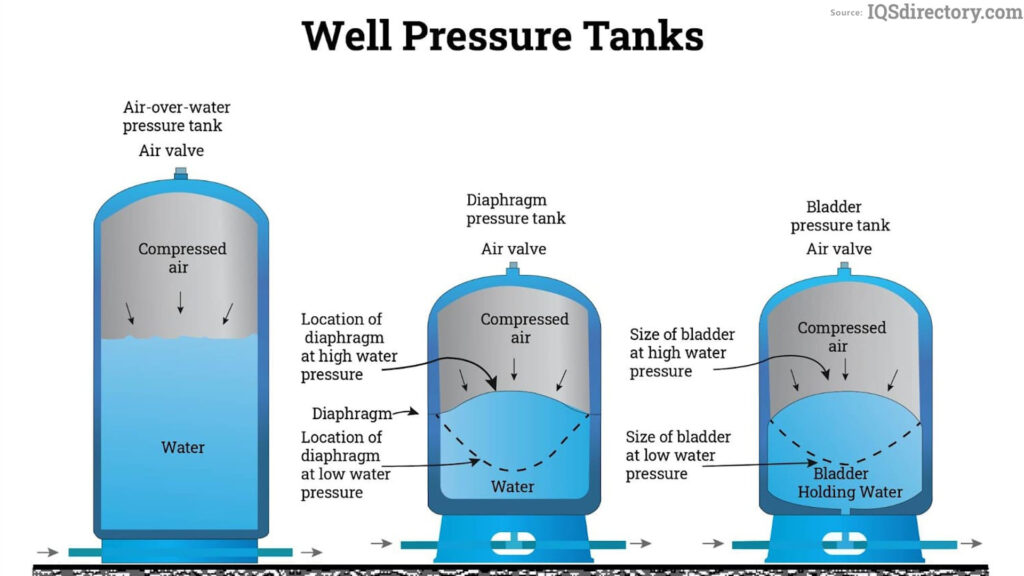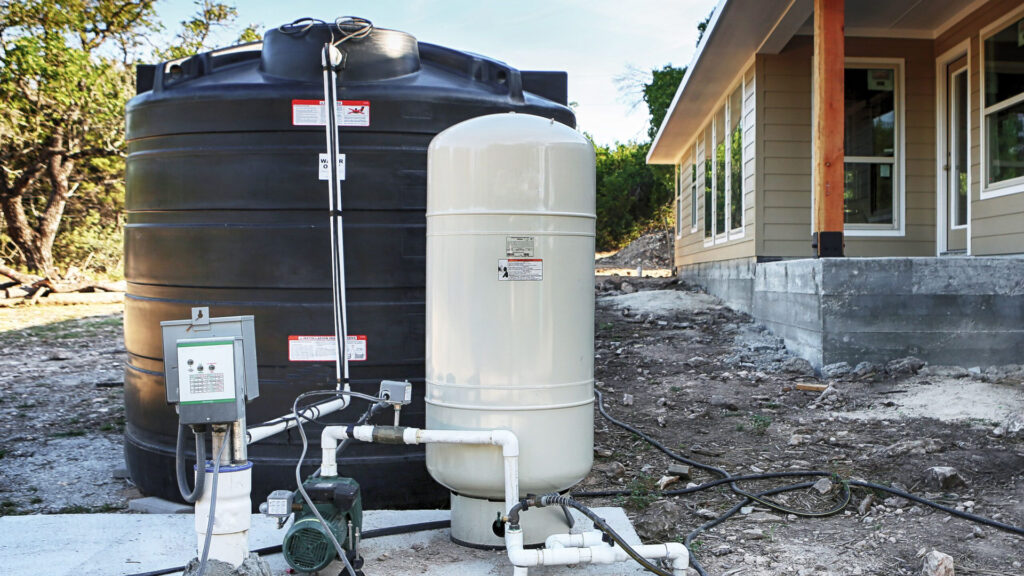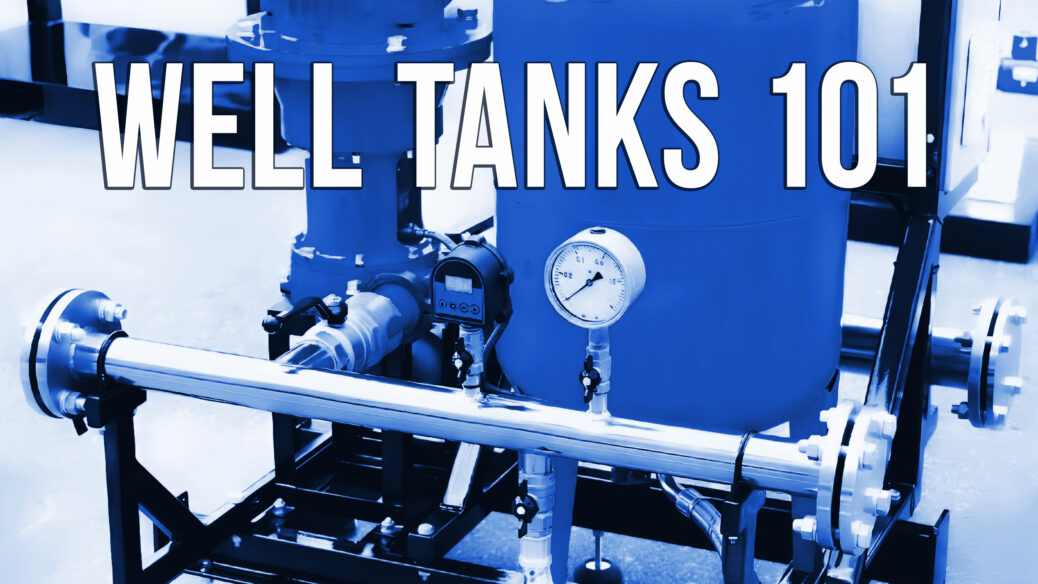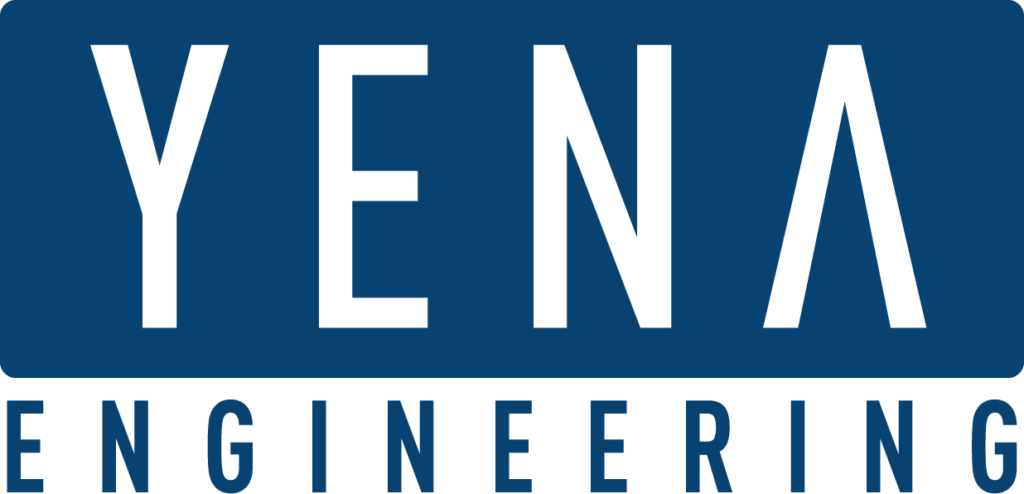A well tank, an integral component of a private water system, ensures a consistent water supply and stabilizes water pressure within your home or commercial property. Acting as a reservoir, it holds water pulled from the well by the pump, allowing for immediate use without needing to start the pump each time water is demanded. This not only saves energy but also reduces wear on the pump, extending its lifespan.
Well tanks are more than just storage units; they are pivotal in maintaining the equilibrium of your water supply system. By mitigating rapid pump cycling – the frequent on and off cycles of the pump – they prevent potential damage and contribute to the system’s longevity.
How Well Tanks Work
The magic of well tanks lies in their ability to maintain consistent water pressure. This is achieved through a simple yet effective mechanism: pressure regulation and water storage. Inside the tank, air and water are separated by a diaphragm or bladder, which expands and contracts as water is used or replenished. This process maintains a predetermined pressure range, ensuring that water flows steadily to your taps.
Pressure settings are crucial. They dictate when the pump will kick in to refill the tank and when it will stop. Proper adjustments ensure efficiency, preventing the pump from overworking and reducing energy consumption.
The role of well tanks in ensuring water pressure and supply stability cannot be overstated. They are the backbone of any well water system, ensuring that water is available on demand, at the right pressure, and without unnecessary pump wear.

Types of Well Tanks
Understanding the different types of well tanks is essential for ensuring the longevity and efficiency of your water system. Here’s a deeper dive into each type, helping you make an informed decision based on your needs.
Diaphragm Tanks
Description: Diaphragm well tanks feature a flexible diaphragm that separates the water chamber from the air chamber. This design ensures that air does not mix with water, preventing waterlogging and maintaining consistent water pressure.
Pros:
- Efficiency: The separation between air and water prevents the loss of air through water absorption, maintaining consistent pressure without frequent pump cycles.
- Compact Design: Their structure allows for a smaller footprint, ideal for limited spaces.
Cons:
- Cost: Higher upfront cost due to the complexity of the design.
- Repair Difficulty: Repairs can be challenging because the diaphragm is integral to the tank, making it more costly to replace than simpler components.
Bladder Tanks
Description: Bladder tanks operate similarly to diaphragm tanks but use a bladder instead of a diaphragm. This rubber or butyl bladder expands and contracts as water enters and exits the tank, keeping air and water separate.
Pros:
- Maintenance: Easy to maintain since the bladder can be replaced without replacing the entire tank.
- Stable Pressure: Provides consistent water pressure, reducing pump operation time.
Cons:
- Bladder Wear: The bladder can wear out over time, requiring replacement, which can be a significant expense relative to the tank’s total cost.
Air-Over-Water Tanks
Description: These traditional tanks do not have a diaphragm or bladder. Instead, air and water are contained in a single chamber, relying on air volume above the water to create pressure.
Pros:
- Cost-Effective: Generally less expensive than bladder or diaphragm tanks.
- Simplicity: Simple design with fewer parts that can fail.
Cons:
- Maintenance: Requires more frequent monitoring and maintenance to ensure the proper air-to-water ratio is maintained.
- Waterlogging Potential: Over time, the air can dissolve into the water, leading to waterlogging and necessitating the addition of air.
Air Volume Control Pressure Tanks
Description: These tanks are equipped with a mechanism to automatically add air to the tank as water pressure drops, maintaining a consistent air charge and eliminating the need for manual intervention.
Pros:
- Automatic Pressure Maintenance: Reduces maintenance effort by automatically managing air volume.
- Efficiency: Helps maintain consistent water pressure and reduces pump cycling.
Cons:
- Complexity: More complex installation and potentially higher initial costs due to the added technology.
- Mechanical Parts: The air volume control system can require maintenance or replacement over time.

Choosing the Right Well Tank
Selecting a well tank goes beyond just picking a type; it involves understanding your water system’s specific needs. Here’s how to assess which tank is right for you:
Size
The tank size directly impacts your water system’s efficiency. Too small, and the pump cycles too frequently, shortening its lifespan. Too large, and you’re wasting energy. Calculate your household’s water drawdown requirement to determine the appropriate tank size.
Material
- Steel Tanks: Offer durability and a higher pressure rating but can be susceptible to corrosion.
- Stainless Steel Tanks: Fixes the problems of carbon steel products but is more expensive.
- Fiberglass and Composite Tanks: Corrosion-resistant and lighter, making installation easier but can be more expensive.
Pressure Requirements
Match the tank’s operational pressure range with your pump’s capability to ensure they work harmoniously. Incorrect pressure settings can lead to inefficient pumping and premature wear.
Well Depth and Water Usage
Deeper wells require tanks that can handle higher pressures, while higher household water usage demands a tank with a larger capacity to reduce pump cycles and provide a continuous water supply.
Conclusion
Selecting the ideal well tank is vital for your system’s efficiency and longevity. With the myriad of factors to consider, including tank size, material, and pressure requirements, expert advice is not just beneficial; it’s necessary.
At YENA Engineering, we specialize in fabrication of steel and stainless steel pressurized products like well tanks and all types of pressure vessels. Let YENA Engineering provide the expertise you need for a seamless and effective solution. Contact us today to learn how we can help your next project.
CHECK OUR OTHER RELATED ARTICLES
Pressure Vessels – Everything you need to know
ASME Stamp and Its Importance for Pressure Vessels
Why Pressure Vessel Testing is necessary?
Pressure Vessel Design
Pressure Vessel Supplier: Everything You Need to Know



